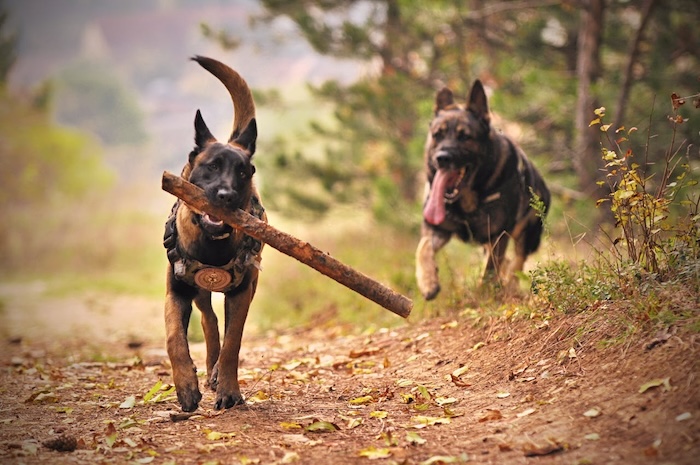The increasing presence of pets in public spaces is a testament to their role as beloved family members. As more cities and towns embrace pet-friendly policies, pet owners have more opportunities to enjoy outings with their furry friends.
However, the rise of these pet-friendly public spaces comes with responsibilities and considerations that every pet owner should be aware of to ensure a harmonious and safe experience for everyone involved. Understanding these responsibilities can help mitigate potential issues, such as encountering dangerous dogs, which can lead to severe consequences.

The Evolution of Pet-friendly Public Spaces
The concept of pet-friendly public spaces has primarily transformed in the last ten years. Not only do beaches and parks but also a few cafes and retail stores have opened their doors to pets. This clearly shows a society that is increasingly willing to take a step back and acknowledge the great value of four-legged friends who have always been significant in humans’ lives.
This alteration is attributed to combining such things as a new appreciation of pet ownership’s rewards like mental health improvement and a broader perspective on physical activity. To accomplish these goals, municipalities have been building areas specifically for pets, including dog parks and pet-friendly zones in existing spaces where both humans and their pets could enjoy outdoor activities.
This well-thought-out co-existence between humans and animals gives pet owners more possibilities to be closer to their pets and better connect themselves with their places of living. However, including pets in public spaces is a serious responsibility. There has to be careful planning prior, and the rule constraints should be strictly kept. There should be no disregard for the users’ safety or comfort. A pet owner has to make sure that his or her pet joins this public area once he or she becomes familiar with these places’ rules and directives so as not to cause any trouble and keep the environment favorable for everyone.
Legal Responsibilities and Safety Considerations
Dog keepers, like humans, must also respect their legal rights when they go to animal-friendly places. Besides, leash laws are in several different versions, as well as waste collection laws and how pets follow the rules. The differing laws range from free running only on the individual blocks in one location to keeping the pet on a leash all the time in the other. In case of non-abidance to the rules imposed, penalties that may be a fine or even a more serious legal action are possible.
When you and your pet visit pet-friendly public areas, how are you sure your pet is well-behaved and socialized? If someone doesn’t have a fence, a particular dog may get out and attack the visitors, belongings of other visitors, and even the officers who help. Owners should spend time teaching and socializing their pets to stop incidents from happening.
Getting to know your pet’s character and noticing the situations that might be considered stressful or dangerous is essential to avoid conflicts. In cases where the pet is dealing with an aggressive episode, the owners should contact expert counselors and ask for their advice on the problem.
The level of safety varies depending on the health of pets. Pets also should be up-to-date on their vaccinations and parasite control to prevent the spread of illnesses. Regular veterinary check-ups must be organized to ensure the pets are healthy and safe around animals and humans. The doctor also recommends that you carry a scoop and speed up the cleaning of after pets, which keeps the environment of the public spaces clean and eliminates potential health risks.
The Role of Public Awareness and Advocacy
Public awareness and advocacy are the two most significant factors that contribute to the successful integration of pets into public spaces. When pet owners understand their rights and responsibilities around pets and the significance of adhering to the rules, they create a safe and pleasurable environment for everyone. The local authorities and advocacy groups often team up to offer pet owners resources and information such as brochures, workshops, and web resources.
In addition, pet owners can also become a part of public awareness efforts. By showing a good example, which includes keeping pets on leashes and cleaning up after them, it is made clear that this is what responsible pet owners do to serve as role models to other people. Apart from that, the functionality of any clean-up projects in one’s neighborhood, etc., the pet owners serve as life examples of the positive influence of responsible pet ownership
Conclusion
The rise of pet-friendly public spaces draws our attention to the groundbreaking change in the recognition of pet relationship values in our lives. The use of these spaces gives a unique opportunity for both humans and pets to engage in physical activity, communication, and human interaction.
Nevertheless, a dog-friendly environment requires a dog owner to demonstrate responsibility by adhering to the leashes, picking up excrement in these areas, ensuring his dog is obedient and healthy, and participating in the public education and advocacy program. Doing so will allow us to achieve secure, fun-filled, inviting environments for pets and their owners, facilitating the existence of amicable companionship in our communities.
As we carry on the rise of pet-friendly public spaces, we must keep at the heart of the responsible use that is brought with it. Knowing the rules, getting your pet ready, and doing the collective work to get the spaces in the best shape will mean that all of us will enjoy the benefits they offer for an extended period. Since you have had a pet for quite a while or have just found the joy of pet companionship, sticking to these principles will create a mutually rewarding and satisfying experience for each participant.
